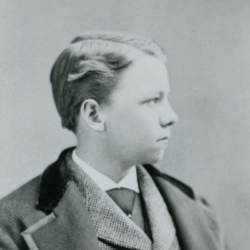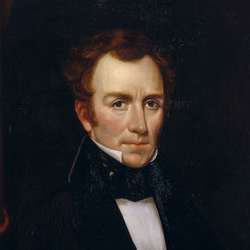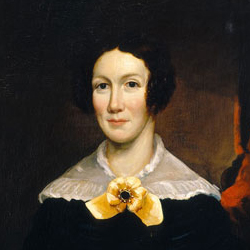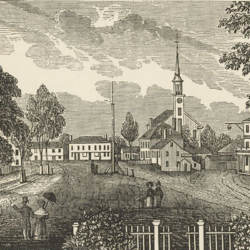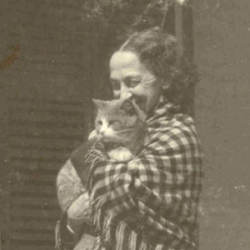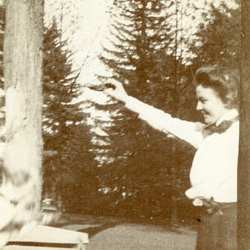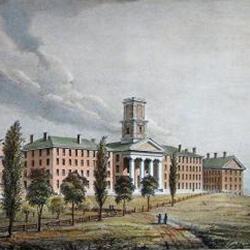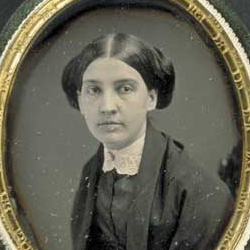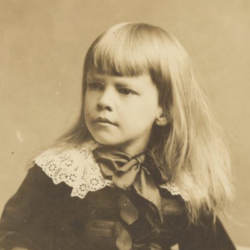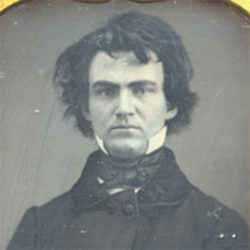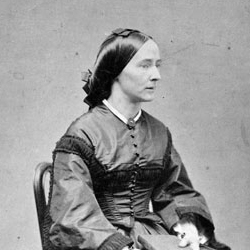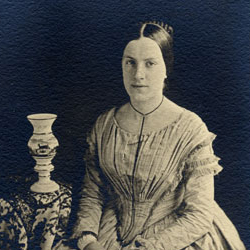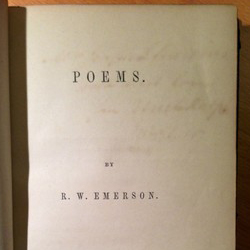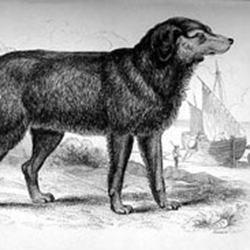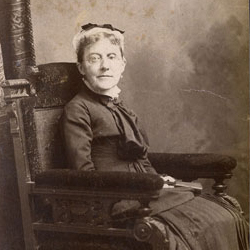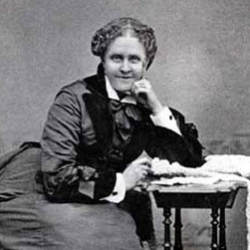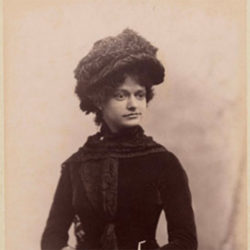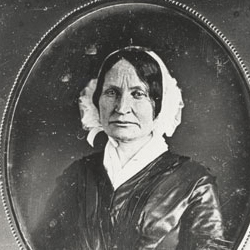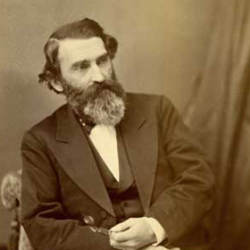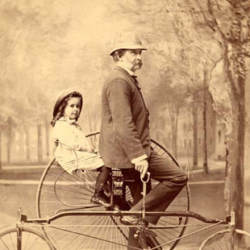Edward (Ned) Dickinson (1861-1898), nephew
Austin and Susan Dickinson's eldest child was called Ned. Although Emily Dickinson admitted her “fear of joggling Him!” (L232), she developed a close and gleeful relationship with her nephew...
Edward Dickinson (1803-1874), father
Edward Dickinson embraced the conservative Whig political party and embodied its ethics of responsibility, fairness, and personal restraint to a point that contemporaries found his demeanor severe and unyielding...
Emily Norcross Dickinson (1804-1882), mother
The eldest daughter of nine children, Emily Norcross had an extraordinary education for a young woman in the early nineteenth century...
Frances (1847-1896) and Louisa (1842-1919) Norcross, cousins
Fanny and Loo, as Emily affectionately called her cousins, were close friends to the poet. When the cousins were orphaned in 1863, Dickinson offered her home as a refuge...
Lavinia Norcross Dickinson (1833-1899), sister
One of the most significant people in Emily Dickinson’s life was her sister Lavinia, two years younger, and by Emily’s account, the more practical of the two. “I don’t see much of Vinnie – she’s mostly dusting stairs!” (L176)...
Martha Dickinson (Mattie) Bianchi (1866-1943), niece
The last surviving member of the Dickinson line, Martha (“Mattie”) was the daughter of Austin and Susan Dickinson. A poet and novelist herself, Mattie inherited Emily’s manuscripts and revived interest in her aunt’s poetry...
Samuel Fowler Dickinson (1775-1838) and Lucretia Gunn Dickinson (1775-1840), grandparents
Emily’s paternal grandfather, a prominent Amherst lawyer, built the brick house on Main Street that became her home and sanctuary for most of her life...
Susan Huntington Gilbert Dickinson (1830-1913), sister-in-law
Married to the poet’s brother Austin, Susan lived at The Evergreens, where she raised her children Ned, Martha, and Thomas Gilbert (“Gib”). She suffered the tragic loss of her son Gib in 1883...
Thomas Gilbert (Gib) Dickinson (1875-1883), nephew
Emily’s nephew Gib was born in 1875 and doted on by the whole family. “Gib is all right and as naughty as ever,” wrote his brother, Ned, in a letter to their mother. Tragically, Gib contracted typhoid fever and died in the fall of 1883, only 8 years old...
William Austin Dickinson (1829-1895), brother
The world of the close-knit Dickinson family revolved around Austin, the oldest of the three Dickinson children. Emily Dickinson was especially close to her brother in their youth...
Abby Wood Bliss (1830-1915), friend
Abby Maria Wood Bliss was Dickinson’s “particular friend” (L8) and schoolmate at Amherst Academy, and one of the close group of girlhood friends that the poet called “our circle of five.”
Abiah Root (1830-1915), friend
One of Dickinson’s group of five close girlhood friends, Abiah was the friend whom the poet most trusted to hear her own spiritual wrestling.
Benjamin Franklin Newton (1821-1853), friend
The poet wrote of her friend, the young law student, “Mr. Newton became to me a gentle, yet grave Preceptor, teaching me what to read, what authors to admire, what was most grand or beautiful in nature, and that sublimer lesson, a faith in things unseen.”
Carlo (1849-1866), dog
A brown Newfoundland, Carlo accompanied the poet on walks in the woods and fields of Amherst.
Elizabeth Holland (1823-1896), friend
Dickinson wrote over 90 letters to Holland, confiding in her older friend about deeply personal issues, as well as lighter topics, including their shared love of plants.
Helen Hunt Jackson (1830-1885), friend
A popular American poet, novelist, short story writer, and essayist, Jackson was—like Dickinson—a daughter of Amherst.
Mabel Loomis Todd (1856-1932), correspondent
Instrumental in publishing Emily’s poetry, Todd nonetheless had a complicated relationship with the Dickinson family.
Mary Lyon (1797-1849), teacher
A pioneering educator of women, Mary founded Mount Holyoke Female Seminary in 1837, which Emily Dickinson attended from 1847-48. In 1893, the seminary became Mount Holyoke College, where Lyon’s legacy is celebrated yearly at commencement.
Samuel Bowles (1826-1878), friend
Editor-in-chief of the influential newspaper the Springfield Republican, Bowles was a primary recipient of Dickinson’s poems.
Thomas Wentworth Higginson (1823-1911), correspondent
A lifelong radical, outspoken abolitionist, and advocate of women’s rights, Higginson was the co-editor of the first two collections of Emily Dickinson’s poems.
